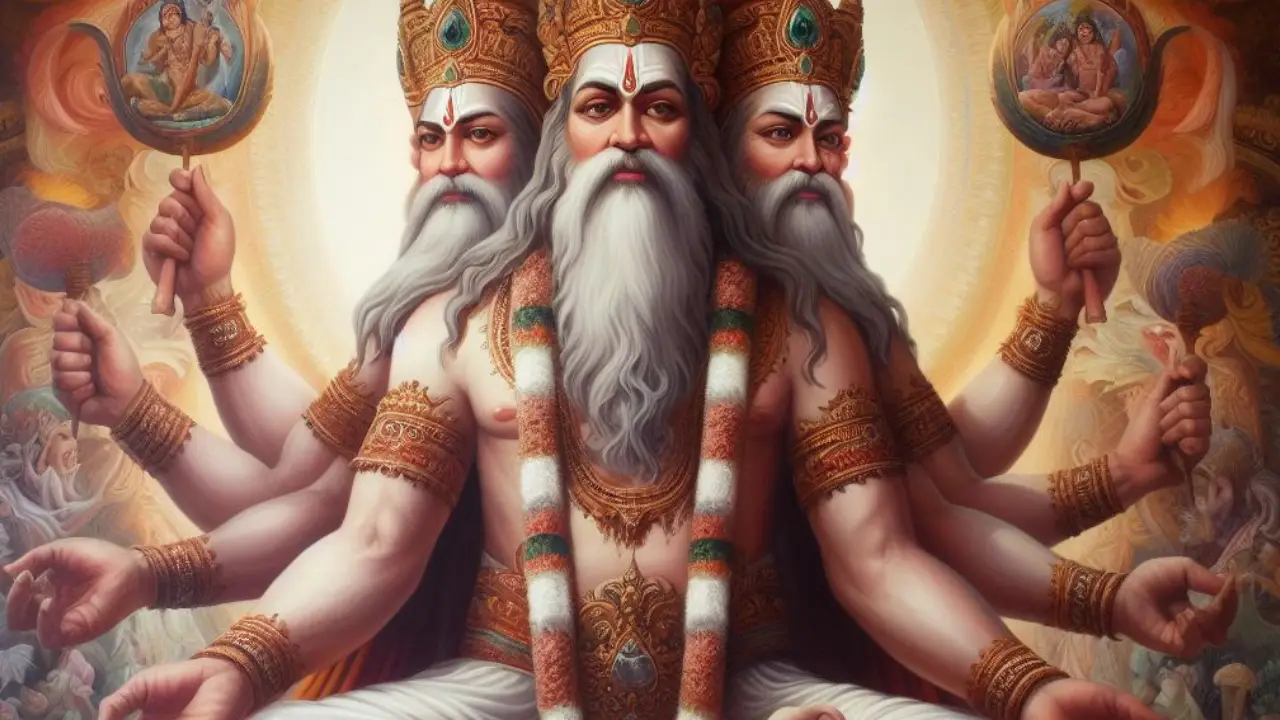In the vast tapestry of Hindu mythology, Lord Brahma plays a central role as the creator of the universe. He is one of the members of the divine triumvirate, known as the Trimurti, alongside Lord Vishnu and Lord Shiva. The creation story of Hinduism, beautifully woven with sacred scriptures and cosmological beliefs, unveils the cosmic dance of Lord Brahma in bringing existence into being.
The Divine Birth of Lord Brahma
According to ancient Hindu texts like the Brahma Purana and Vedas, the origin of Lord Brahma’s creation begins with a cosmic egg, known as “Hiranyagarbha.” Within this egg, the primordial energies lay dormant, waiting for the divine spark to ignite the cosmic cycle. From the cosmic egg emerged Lord Brahma, seated on a magnificent lotus, with four heads representing the four directions.
The Creation of the Universe
Empowered with divine wisdom and creative prowess, Lord Brahma embarked on the task of shaping the universe. With his four heads, he recited the sacred verses from the Vedas, infusing life into the void. He meticulously designed the heavens, the earth, and all living beings, bestowing them with unique characteristics and attributes.
The Role of Lord Brahma in Creating Life
Lord Brahma’s creative energy was boundless, and he blessed all living creatures with different forms and purposes. He breathed life into gods, demons, humans, animals, and plants, each harmoniously playing its part in the grand design of the universe. Through his benevolence, life flourished, and the cycle of birth and rebirth began.
The Sacred Lotus and Lord Brahma
The lotus holds immense significance in Hindu mythology and symbolism. Lord Brahma’s association with the lotus represents purity, creation, and spiritual enlightenment. As he sits on the lotus, it symbolizes detachment from the material world while being actively involved in the process of creation.
The Cycles of Creation, Preservation, and Destruction
The Trimurti reflects the three cosmic functions – creation, preservation, and destruction. Lord Brahma’s role as the creator initiates the cycle, followed by Lord Vishnu, who preserves the created universe, and Lord Shiva, who dissolves it to pave the way for a new creation. This perpetual cycle is the essence of Hindu cosmology.
The Temples and Worship of Lord Brahma
Despite his role as the creator, temples dedicated solely to Lord Brahma are scarce in modern-day India. The famous Brahma temple at Pushkar, Rajasthan, stands as a prominent exception. Devotees visit this sacred place to seek blessings for creativity, knowledge, and spiritual growth, acknowledging Lord Brahma’s divine grace.
The Symbolism of Lord Brahma’s Four Heads
His depiction with four heads carries symbolic significance. Each head signifies the four Vedas – Rigveda, Yajurveda, Samaveda, and Atharvaveda – which embody the entirety of knowledge. This symbolism emphasizes his supreme wisdom and intellect in orchestrating the creation of the universe.
Lord Brahma’s Role in the Pantheon
While Lord Brahma is revered as the creator, his position in the Hindu pantheon differs from that of Lord Vishnu and Lord Shiva. His role is not as widely celebrated in festivals and myths, but his contribution to the cosmos remains indispensable.
Conclusion: Embracing Lord Brahma’s Creative Force
The creation story in Hinduism, with Lord Brahma at its epicenter, teaches us to value the creative force that shapes our existence. It reminds us of the interconnectedness of all living beings and the infinite possibilities that arise from divine inspiration.
In conclusion, Lord Brahma’s divine powers and his pivotal role in the creation story of Hinduism provide us with profound insights into the mysteries of existence. As we delve into the cosmic dance of creation, we are invited to embrace the creative force within ourselves, acknowledging the timeless wisdom of Lord Brahma.

